Chapter 7
Discover the unique features of the newspaper format
Newspaper printing processes are fast and cost-effective. It's a format with many advantages but also some drawbacks.
An optimized template for newsprint ensures great results!
Chapter 7
The specific features of newspapers
Introduction
Digital printing is an industrial process which offers newspapers at an affordable price. It's quick, flexible and reliable.
Digital printing is perfect for small and medium runs of newspapers.
Our factory is eco-friendly, we use solvent-free inks and recyclable paper.
Newsprint is thin and the maximum ink coverage is limited. The print quality is not as sharp as magazines or photo books.
Your newspaper will look great if you have these guidelines in mind. You can ask for a free sample newspaper and even proof of your own design, so you can get a feel for them.
Missing jets
Printing resolution is 600dpi. It means that 600 tiny drop of ink (9 picoliter) are printed on each inch of your newspaper.
It may happen that an ink jet head is clogged due to dust or printhead heating.
Our team always purge the printheads before running the press, however a few missing jets can (rarely) occur during printing.
It's hardly discernible on a CMYK image, because other inks will print correctly: missing jets are almost invisible.
Missing jets on grayscale images are more visible because they are printed using black ink only. No other ink will help reduce the missing jet visibility.
Pure black (on the left) and Four-color black (on the right):
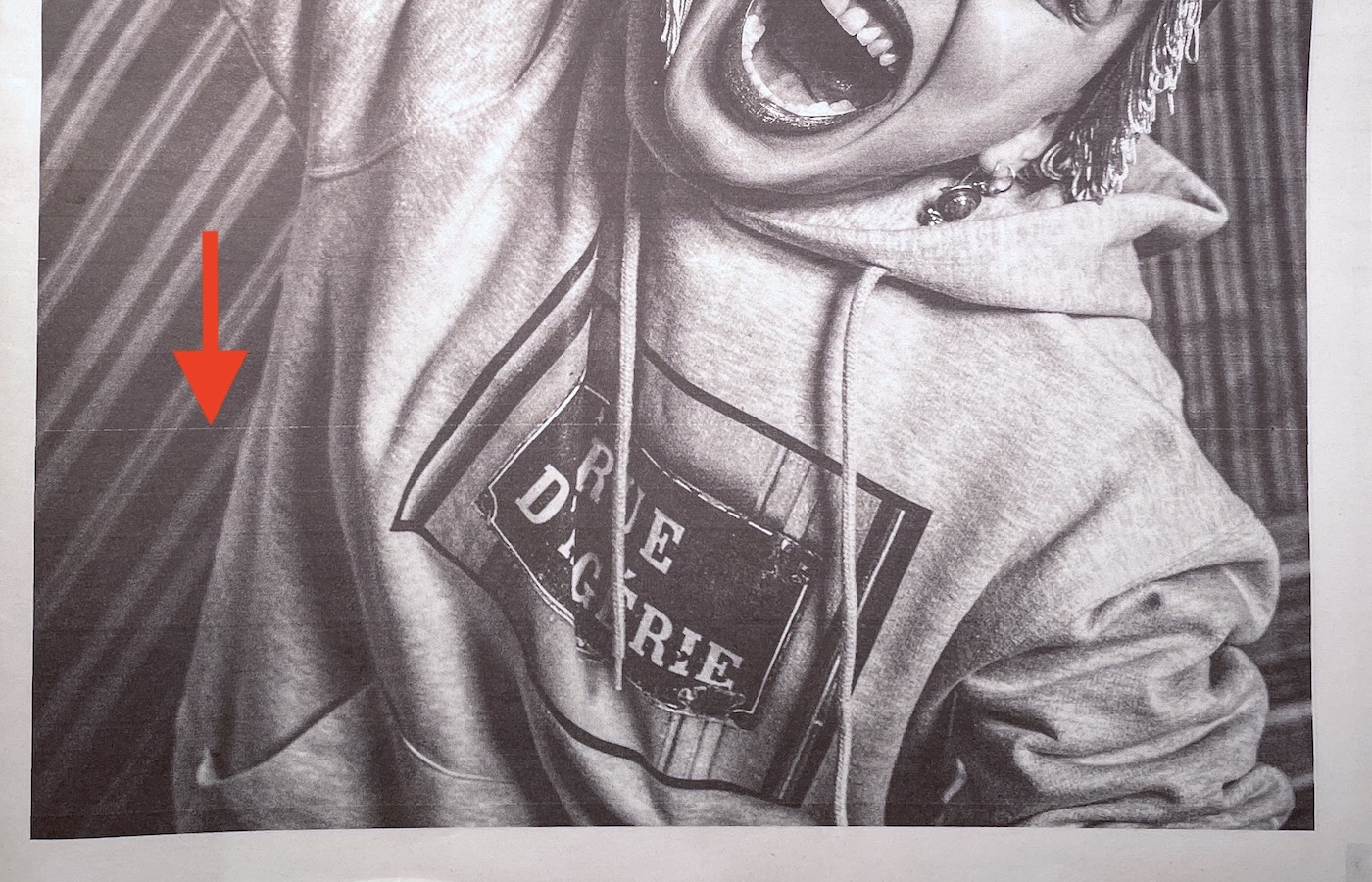
Missing jet on an image.
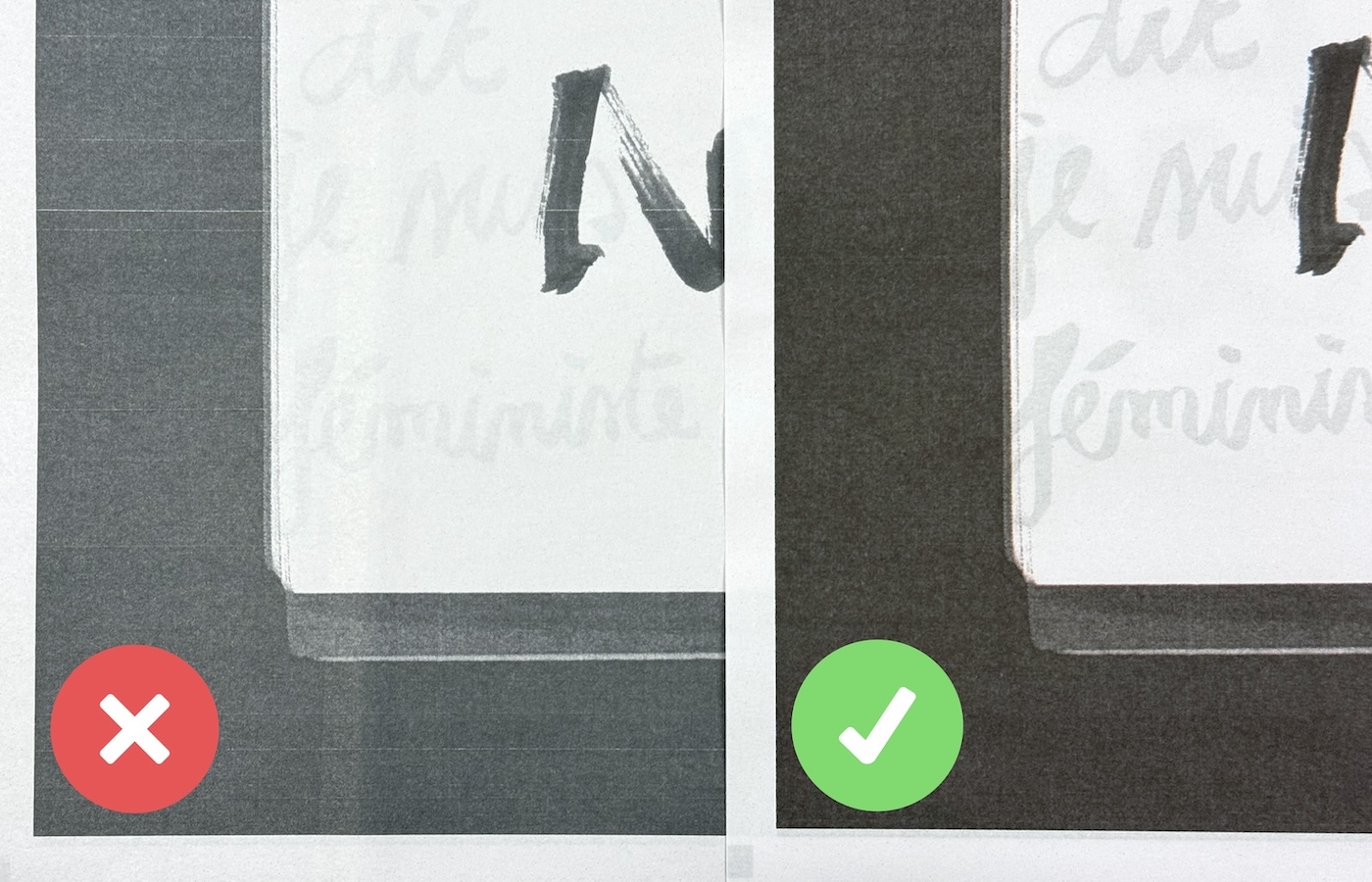
Four-color black provides a denser rendering while minimizing missing jets and banding.
Tips
- Always use CMYK images. It helps mitigate missing jets.
- For black & white pictures, try to use a CMYK B&W instead of greyscale.
Cut marks
3x6mm black rectangles are printed at the edge of each page, inside the 10mm technial margin.
These marks are read by a laser sensor that triggers the cutter of the newspaper finishing line. When sheets are all together, they are ejected into a folding machine. Your newspaper is ready!
Here's an example:
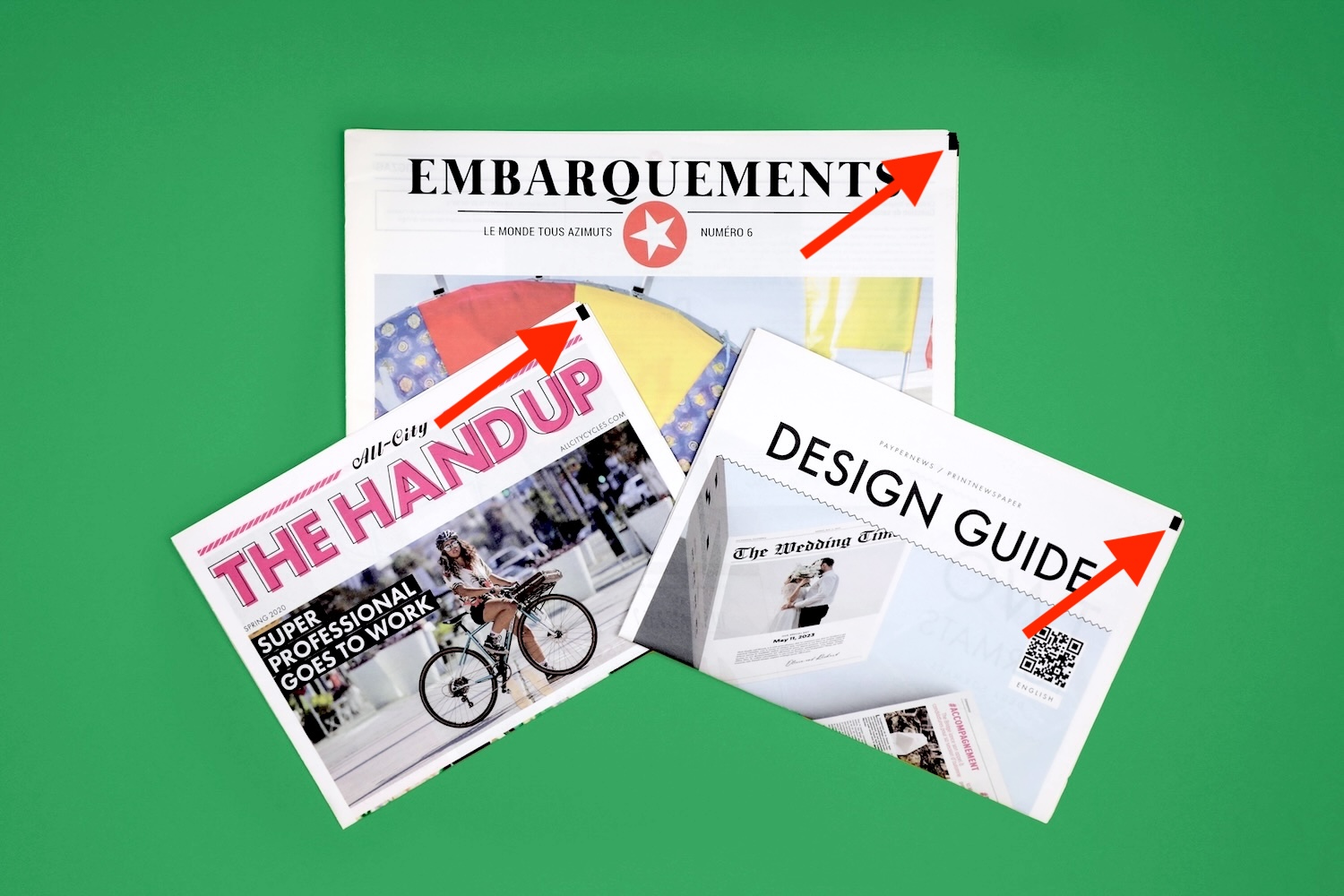
Cut marks.
Precision
Newspaper printing is an industrial process. Newspaper printing and finishing lines are very precise.
Tolerances
- Color overlap: ~ 0.2 mm
- Cutting sheets: ~ 1 mm
- Stacking sheets: ~ 1 mm
- Recto/Verso precision: ~ 1 mm
- First fold: ~ 2 mm
- Second fold: ~ 5 mm
High-pagination newspapers are more likely to have a less precise fold because they are thicker.
Color alignment
We print your newspaper by adding 4 inks: Cyan, Magenta, Yellow and Black (CMYK). Each color overlaps on the others, with a precision of a tenth of a millimeter.
In order to get sharp and good looking texts, we recommend using a pure black. Four-color black texts may look blurry.
Use a bold font for white texts over a solid-color background. Thin texts may look blurry.
Four-color black text (top) and pure black text (bottom):
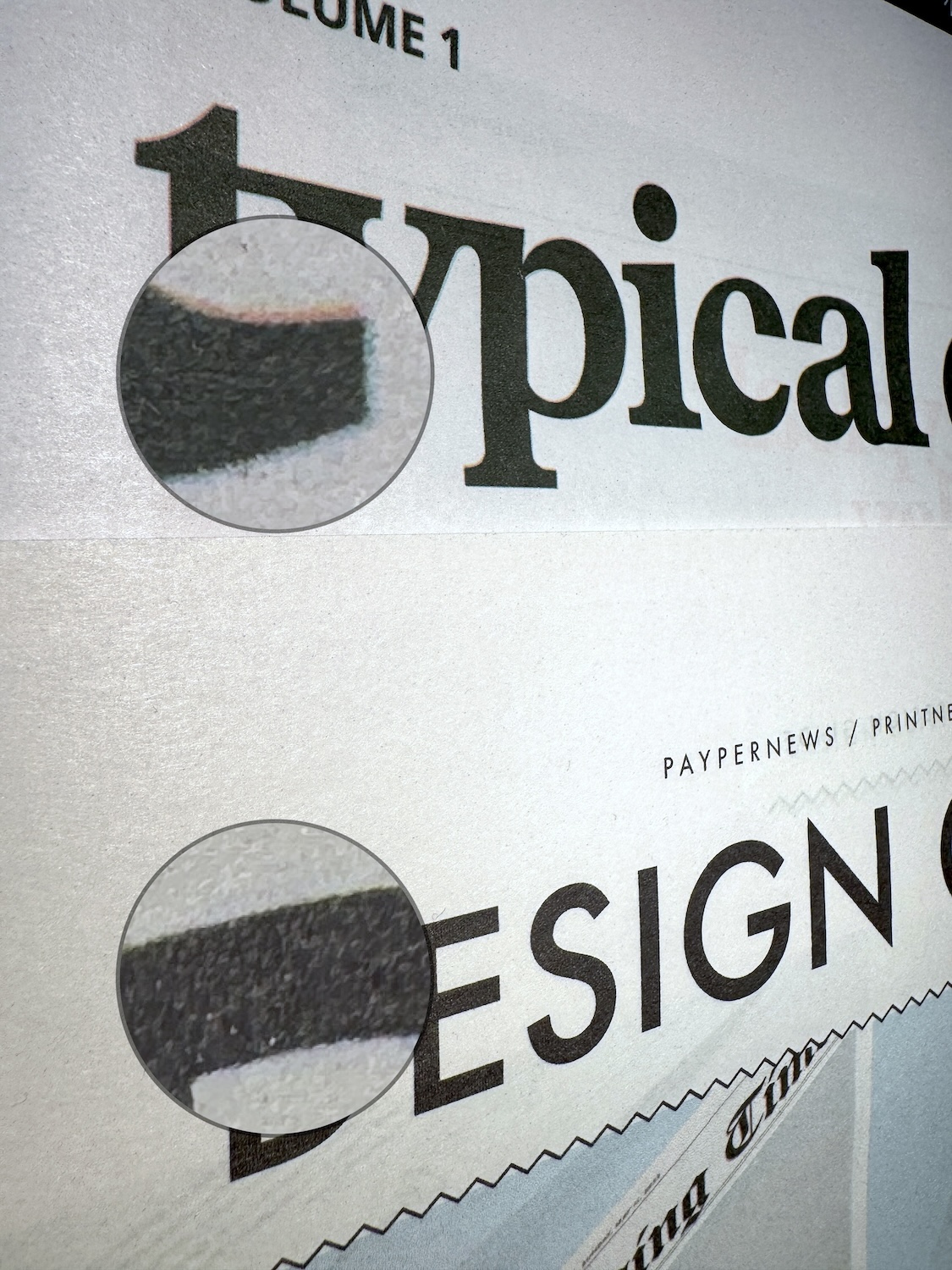
Pure Black Text vs. CMYK Black Text.
Tips
- Use pure black for all black texts.
- Use a bold font for white texts over a solid-color background.
Solid colors
An inkjet press prints while the paper is moving. Banding can occur as the paper moves under the printheads. It's noticable over large areas of flat color.
Banding is more visible when printing a primary color because only 1 printhead is used. Using a mix of several inks for an area of flat color fades the banding effect. For example, a 100%K flat area is more likely to have banding than a 100%K / 30%C / 30%M / 30%Y four-color black.
Here's an example:
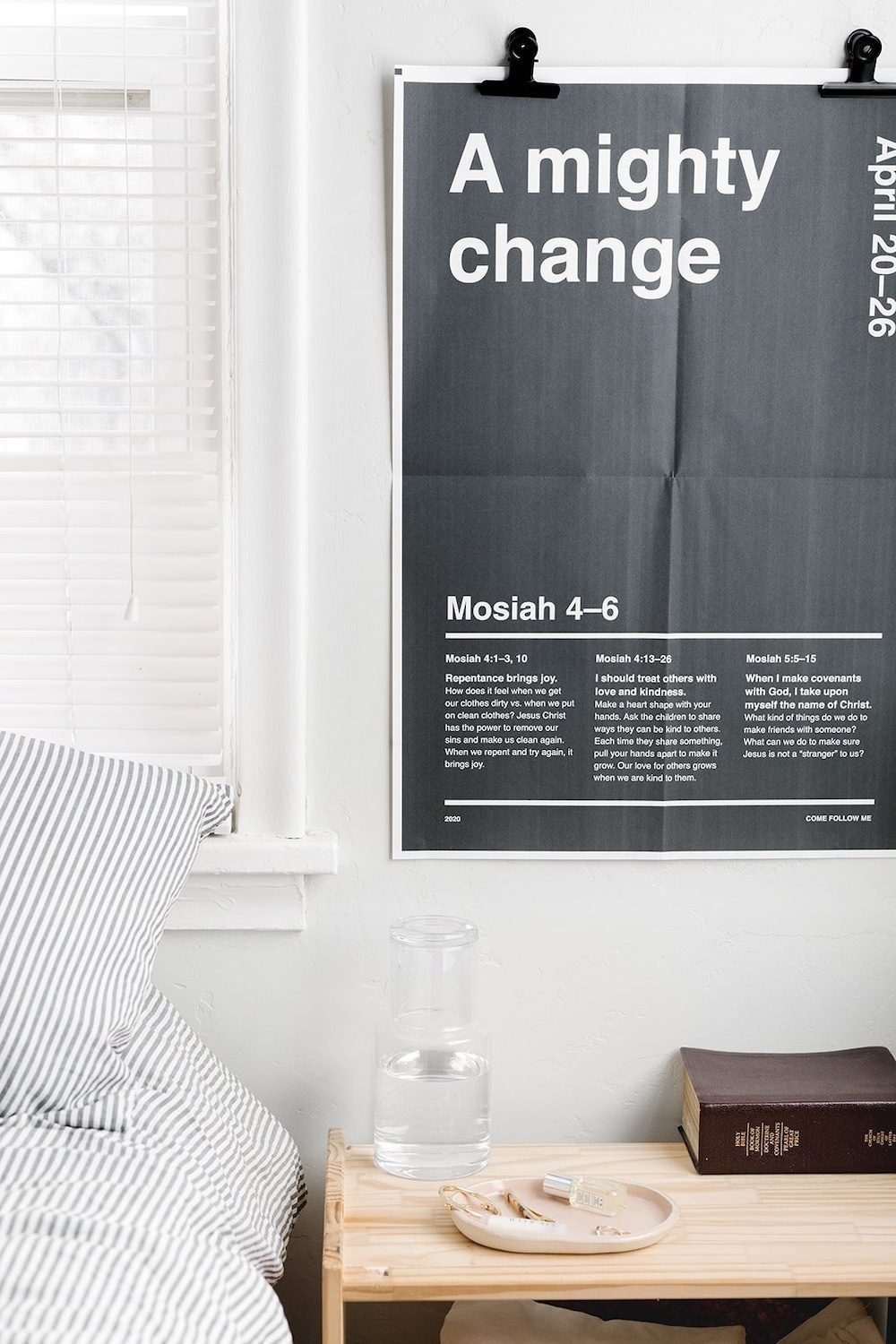
Full-page black fill.
Tips
- Avoid large areas of flat color if you don't want to see any banding.
- If you have large areas of flat color, try to mix different primary colors in order to fade the banding effect.
Finishing
Your newspaper is printed on a paper roll, and mounted on a finishing line in order to cut, stack and fold the sheets of your newspaper. We don't use staples or glue.
For newspapers with more than 32 pages, slight creases may appear on the center spread and at the cross fold for the Broadsheet format. These creases are caused by the thickness of the booklet.
Printer's name
In order to comply with legal requirements in certain regions, particularly when newspapers are distributed in public areas, the printer's name is added at the bottom left of the last page.
If you are not concerned by this notice, you can disable this option when placing an order, in your cart. Your preference will be saved in your account and will apply to all your future orders.